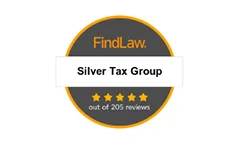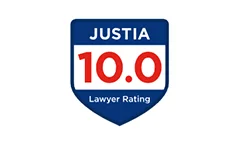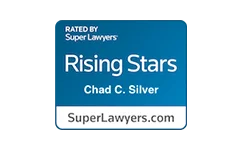Settle Your Tax Debt With An IRS Offer In Compromise: A Complete Guide

Staring down a mountain of tax debt can feel like facing an unclimbable peak. But there’s a lifeline that might just be your ticket to the base camp: the IRS Offer in Compromise. This program is no mere band-aid; it’s a full-fledged strategy for those grappling with more than they can handle in back taxes.
You’re about to dive into how this IRS-sanctioned path could offer you relief from overwhelming tax liabilities. With insight into eligibility requirements, including economic hardship, and step-by-step guidance through the application maze, we’ll help you understand if this option fits your financial landscape.
We won’t sugarcoat it—navigating tax issues is tough. But armed with knowledge and clear direction, scaling down that daunting debt might just be within reach, especially with IRS Offer in Compromise help from Silver Tax Group
Understanding the IRS Offer in Compromise Program

The IRS doesn’t exactly have a reputation for handing out deals, but with an IRS Offer in Compromise program, they just might cut you some slack on your tax debts. Think of it like a clearance sale where both you and Uncle Sam can walk away happy.
What is an IRS Offer in Compromise?
Sometimes folks get hit with tax bills that feel like a heavyweight champ’s punch to the wallet. An IRS Offer in Compromise (OIC) could be the lifesaver when drowning in federal tax debt.
This compromise program isn’t about haggling over pennies; it’s serious business where taxpayers can settle their dues for less than what they owe if paying up would cause undue economic hardship or other specific circumstances apply.
A juicy tidbit? Back in 2017, almost half—40.3% to be exact—of these OIC submissions got the green light from the IRS. That means loads of people found relief through this benefits-rich option tailored for resolving outstanding tax liabilities without selling off Grandma’s heirlooms.
Demonstrating Economic Hardship
Economic hardship isn’t just having to skip your morning latte run—it’s more like being stuck between a rock and a hard place financially speaking. To qualify for an OIC based on undue economic hardship, you need to show that shelling out full payment would leave you unable to cover basic living expenses.
We’re talking essentials here: food on the table kind of stuff—not luxury cruises or gold-plated anything. It all boils down to proving that your monthly income minus those necessary costs leaves little room—if any—for clearing that looming tax bill without help from this special program.
IRS Pre-Qualifier Tool Explained
If techy gadgets are more your style than dusty old paperwork, then you’ll love playing around with the IRS pre-qualifier tool. Consider it a crystal ball into whether pursuing an offer makes sense before diving headfirst into forms galore.
This handy-dandy online quiz takes stock of what dough you’ve got coming in against assets and spitballs back whether there’s potential for making peace with your taxes via OIC—and remember kids, eligibility hinges not only on doubts about collectibility but also if coughing up full payment leads straight down poverty lane.
Working with the Silver Tax Group means you’ve got a team that navigates IRS complexities like pros. They’re your guide, making sure every twist and turn in the tax process is handled with expertise. You’ll feel confident knowing they’re leading the way to a clear resolution.
Key Takeaway:
An IRS Offer in Compromise could be your golden ticket out of tax debt, letting you settle for less than you owe if paying the full amount means financial doom. The IRS’s pre-qualifier tool is a quick way to check if you might qualify—no paperwork required.
Eligibility Requirements for an IRS Offer in Compromise
Tackling tax debt can feel like a game of chess with the IRS, but an Offer in Compromise (OIC) might just be your checkmate move. This savvy strategy isn’t for everyone; it’s reserved for players who need it. To get on board, you’ve got to meet some strict eligibility criteria.
Demonstrating Economic Hardship
The IRS doesn’t hand out OICs like candy at Halloween; they’re more selective than that fancy club downtown. Proving economic hardship is key here—like being stuck between a rock and another rock when paying your full tax liability could mean not affording basic living expenses.
So what counts as undue economic hardship? Think along the lines of choosing between keeping the lights on or settling your tax bill—a choice no one should have to make. It’s about convincing Uncle Sam that collecting the full amount would leave you financially devastated faster than a Monopoly game gone wrong.
IRS Pre-Qualifier Tool Explained
If diving into IRS forms sounds as fun as swimming with sharks, take heart—the IRS Pre-Qualifier tool is here to help test the waters before you jump in. By inputting some financial info, this nifty little gadget tells you if there’s even a sliver of hope that your offer based on doubt as to collectibility will float with the big guys at federal tax headquarters.
No need for guesswork because this tool takes stock of everything: income certification, asset equity—even how much dough you’ve got sitting under those couch cushions (figuratively speaking). It’s pretty much saying “Here are my cards” without actually having to show them… yet.
Note:
Tap into Silver Tax Group’s expertise or get step-by-step instructions through these murky waters:
We’ve seen plenty go toe-to-toe with their back taxes using various tactics: installment agreements where payments trickle in over time; credit card payoffs which can lead down another rabbit hole entirely; even bankruptcy proceedings—which we all agree should be last resort moves right up there next to selling grandma’s heirloom china.
You see though—with OICs—you’re looking at possibly wiping clean most outstanding debts against less money upfront and typically within a two-year time period—it gives “let bygones be bygones” new meaning. B
ut don’t let its appeal distract from reality—it comes packed with stringent prerequisites including filing required returns and making necessary estimated federal tax deposits beforehand because yes folks—there’s always fine print…
Key Takeaway:
Want to settle your tax debt for less with an IRS Offer in Compromise? First, make sure you really need it. Prove severe economic hardship and use the IRS Pre-Qualifier tool to see if you might qualify—no guesswork needed.
Dive into the IRS’s world armed with knowledge: file all required returns, keep up with estimated tax payments, and remember that while OIC can be a game-changer, it’s not a free-for-all—it demands strict adherence to its rules.
The Application Process Step by Step
Wading through the murky waters of tax debt can be daunting, but an Offer in Compromise might just be your lifeline. It’s not a walk in the park though; you’ll need to arm yourself with forms and know-how before stepping into this arena.
Required Forms and Documentation Details
There are important IRS forms to keep in mind when talking about the IRS Offer in Compromise, like Form 433, Form 656, and Form 656-b.
Tackling tax liabilities head-on starts with paperwork – specifically, Form 433-A. This form is like your financial tell-all: it digs into your income sources, asset equity, living expenses…the whole nine yards. And if that wasn’t enough paper for one day, you’ve also got to fill out the actual application using Form 656.
You’ll want to make sure every ‘i’ is dotted because these documents paint a picture of why paying off your full tax bill isn’t in the cards right now. Remember when we said it was detailed? We weren’t kidding—think about including everything from credit card statements to real estate deeds.
Income Certification Process
If scraping together funds for fees feels like undue economic hardship already – take a breath. The IRS gets it and may cut some slack via income certification. Check whether you fall under Low-Income Certification guidelines; if so, they’ll waive that initial payment along with the application fee.
This step is more than checking boxes—it’s proving that meeting basic living expenses takes priority over Uncle Sam’s slice of your pie chart (for now). So gather those pay stubs or proof of government benefits pronto because this could mean one less hurdle between you and potential freedom from overwhelming tax debts.
Financial Analysis During the IRS Offer in Compromise Evaluation
Crunching numbers isn’t everyone’s cup of tea, but when it comes to an Offer in Compromise (OIC), it’s a full-blown tea party with the IRS as your guest. They’ll be taking a magnifying glass to your finances—examining income, expenses, and assets—to see if you’re fit for their compromise program.
Evaluation of Income, Expenses, and Assets
Your financial life story is told through bank statements and pay stubs—and trust me; the IRS loves a good read. The goal?
To calculate what they call ‘reasonable collection potential.’ It sounds fancy but boils down to this: how much dough can you realistically cough up without landing on ramen noodles for every meal?
The plot thickens with Form 433-A where long-term assets come into play. Think real estate or that stock portfolio Aunt Betty left you. Every asset gets its moment in the spotlight because Uncle Sam wants his fair share.
Monthly Cash Flow Calculation
Paying tax debts might feel like squeezing water from a stone at times—but there’s a method to the madness. Here’s how it works: subtract total living expenses from total income each month—the result is your monthly cash flow—a number more important than your high score on Tetris.
If after bills there’s enough left over that could make Scrooge McDuck nod approvingly—it could mean waving goodbye to some hard-earned cash towards settling tax liabilities instead of funding those voluntary retirement contributions we all love so much.
Assessing Living Expenses
Living large is nice until the IRS asks about every penny spent on lattes and lunches during their evaluation process. But fear not.
Necessary costs like rent and groceries are considered part of ‘allowable’ living expenses—which means they’re factored into what you need before determining what goes toward tax debt payment plans or lump sum offers.
Uncle Sam’s guidelines, believe it or not, include wiggle room for things essential for well…living. This includes food because eating is somewhat critical last time I checked.
Impact of Voluntary Retirement Contributions
Funding future-you might seem sensible—stashing away money today so tomorrow-me can hit golf balls onto yachts—or whatever retirees do these days—but here’s something spicy: Those same contributions may get scrutinized when figuring out an offer based on effective tax administration criteria.
What you need is a clear and direct approach to tackle your challenges. Let’s get right into it, so we can pinpoint the issues and figure out how to fix them together.
Pros and Cons of Choosing an IRS Offer in Compromise
Benefits of Settling Tax Debts Through IRS Offer in Compromise
The IRS’s Offer in Compromise program can be a lifeline for those sinking under the weight of tax debt. It allows you to settle your tax liabilities for less than what you owe, providing a fresh start from daunting debts that might seem insurmountable. Think about it like hitting the reset button on your financial situation; this could mean waving goodbye to years of stress over unpaid taxes.
In 2017, nearly half (40.3%) who pitched their compromise offers saw them accepted by Uncle Sam’s collection agency—talk about playing ball. And if approved, not only does it lift the dark cloud hanging over your assets but also prevents any existing or potential bankruptcy proceedings dead in their tracks.
This isn’t just pulling numbers out of thin air; real folks have walked away with more manageable payment plans while keeping most pennies right where they belong—in their pockets.
But, getting your Offer in Compromise approved can pose some challenges.
Risks Involved with An OIC
Sure, slicing through tax debt faster than a hot knife through butter sounds great—but let’s pump the brakes for a second and consider some risks. First off, filing an OIC is no walk in the park; there are forms galore and detailed documentation required.
Your financial life gets put under a microscope as part of What You Need to Know About OIC, where every dime earned and spent needs accounting for.
If detail-oriented was never your strong suit or patience isn’t either—this process may test both seriously. Then there’s credit score impact to mull over because yes, settling can ding that number we all obsess over at times.
Avoiding Bankruptcy Through OIC
An offer based on effective tax administration—that fancy term means even if paying up wouldn’t break the bank entirely but would cause undue economic hardship—you’re looking at being prime candidate material here.
This route can help dodge outright bankruptcy—a plus considering how that move drags down credit scores worse than tired toddlers throwing tantrums after skipping nap time.
The beauty? You get to hash out terms directly with the IRS using tools like their pre-qualifier tool. They’re surprisingly reasonable when reviewing cases: If what’s offered represents sincere effort towards chipping away at back taxes without leaving you eating ramen noodles indefinitely—they generally approve these deals within reason.
Remember though—it ain’t all about just getting the job done. It’s also crucial to do it right and with professionalism.
Key Takeaway:
Struggling with tax debt? An Offer in Compromise might let you settle for less and avoid bankruptcy. But remember, it’s a detailed process that needs patience and accuracy to succeed.
An OIC can be your financial reset button if done right, potentially saving you from years of stress over unpaid taxes.
Let Silver Tax Group Assist Your IRS Offer in Compromise
So you’ve climbed the info mountain. Now, let’s recap your hike up the Offer in Compromise trail. You now know it’s a real shot at settling tax debts for less than you owe.
Remember these markers: The IRS looks for true economic hardship and ability to pay before saying yes. And that Pre-Qualifier Tool? It’s your first checkpoint on this journey.
Tackling the application is no Sunday stroll; it demands precise forms and honest financial details. Your assets, income, expenses—they all paint a picture of what you can truly afford.
An OIC isn’t just about dodging bankruptcy or easing credit woes—it’s hope packaged in an IRS compromise offer. Sure footing comes from weighing its pros against potential cons carefully.
If those mountains of debt loom large, remember—an Offer in Compromise could be your path through thinner air to firmer ground below. Ready? Contact Silver Tax Group today!





Free Consultation 24/7
Chad Silver
Attorney

Silver Tax Group Locations


777 South Flagler Drive
Suite 800 – West Tower
West Palm Beach FL 33401

4005 Guadalupe St
Suite C
Austin, TX 78751


